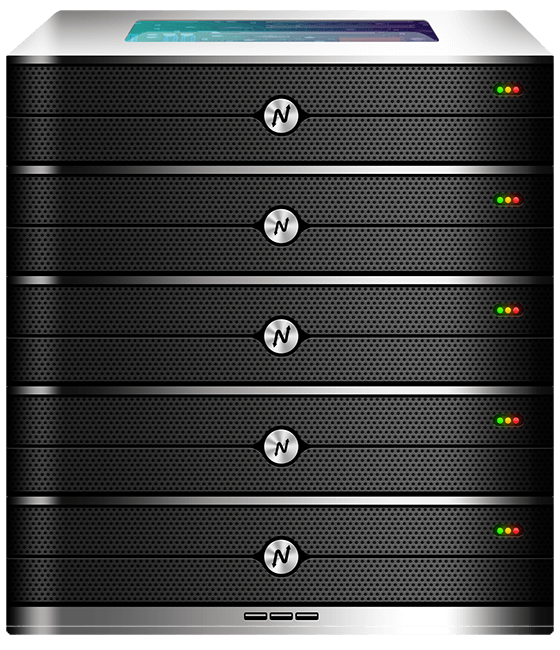If your IT team needs full control of the server environment, an unmanaged VPS is often the right choice. In the first 100 words you should know this: unmanaged VPS delivers root access, predictable resources, and lower recurring costs because you manage the operating system, security, and software stack. For B2B buyers and technical teams, that tradeoff is powerful — you get performance and configuration freedom while keeping infrastructure costs predictable.
Choosing Indian-hosted infrastructure with a provider like XenaxCloud adds strategic value. Indian data centers offer cost-effectiveness, lower latency across Asia, strong security and compliance options, and scalability for international growth. That combination helps teams deploy unmanaged VPS instances quickly, maintain secure production environments, and serve customers across the Asia-Pacific region with competitive performance.

What is an unmanaged VPS and who should use it?
An unmanaged VPS is a virtual private server where the hosting provider maintains the physical hardware, network, and hypervisor, while customers handle the operating system, patches, software configuration, and security. Unlike managed services, the provider does not apply OS updates, tune services, or troubleshoot application-level issues.
This model fits three types of organisations best. First, experienced sysadmin teams that want complete control for custom stacks or specific kernel settings. Second, agencies and resellers who need isolated environments per client. Third, startups and SaaS teams that prefer to optimize costs by managing their own stack. Because you control updates, performance tuning, and backups, an unmanaged VPS is ideal when you need predictable resource allocation and quick access to system-level settings.
Examples: a development team running container orchestration may use an unmanaged VPS as a lightweight node for CI runners. An agency might host client sites on separate unmanaged VPS instances to ensure isolation and billing clarity. A SaaS product with custom database tuning benefits from full OS access on an unmanaged VPS instance.
How to choose the right unmanaged VPS plan
Choosing the right unmanaged VPS plan begins with a clear map of your workloads. Inventory your applications, estimate peak concurrency, and list I/O needs. Key metrics are CPU cores, RAM, disk type, disk size, and bandwidth. NVMe storage matters for database-driven apps because it dramatically reduces latency and improves throughput.
Start small with headroom. For development or small production apps, Speed KVM VPS 1 — 2 Vcore CPU, 4GB RAM, 40GB Storage, 2TB Bandwidth, $4.79 is a sensible entry point. If you expect higher concurrency or heavier database load, move to KVM VPS 2 — 4 Vcore CPU, 8GB RAM, 50GB Storage, 2TB Bandwidth, $8.39. For mid-size deployments and agencies, KVM VPS 3 — 8 Vcore CPU, 16GB RAM, 70GB Storage, 4TB Bandwidth, $14.39 gives room to grow.
Consider these selection rules:
- CPU-bound services require more vCores; choose an unmanaged VPS with additional cores rather than relying on turbo bursts.
- Memory-hungry applications need more RAM; database caching benefits significantly from extra memory.
- Use NVMe-backed plans if your workload includes frequent disk I/O.
- Prioritize bandwidth and network consistency if you serve large files or run media streams.
For direct provisioning and plan details, reference the provider’s VPS page to match specs and SLA. Using XenaxCloud’s VPS console simplifies upgrades and snapshot-based backups, making it easier to scale an unmanaged VPS without migration headaches. https://xenaxcloud.com/vps-server/
Speed, uptime, and security advantages of unmanaged VPS
Performance on an unmanaged VPS is predictable: resources are dedicated, so noisy neighbour issues are reduced. NVMe drives in many KVM plans deliver measurable improvements in database latency and page load times. For B2B services, that performance translates into lower API response times and better user satisfaction.
Uptime is a joint responsibility. The host ensures physical redundancy, network failover, and DDoS protection at the hypervisor layer. You are responsible for OS-level hardening, patching, and application monitoring. To maximize uptime from an unmanaged VPS, implement automated health checks, process managers like systemd or supervisord, and a standard backup routine with snapshots.
Security for an unmanaged VPS must be layered. Start with SSH key authentication and disable password logins. Configure a host firewall, limit open ports, and enable automatic security updates where appropriate. Use intrusion prevention tools such as fail2ban, and consider encrypting disks for sensitive data. For compliance-heavy workloads, combine your unmanaged VPS with managed security services or consultative support for audits.
Examples: an eCommerce checkout hosted on an unmanaged VPS should isolate the database and use TLS for all traffic, while a development runner can use ephemeral unmanaged VPS instances protected by ephemeral keys and limited network access.
Real-world use cases for businesses and developers
The unmanaged VPS model fits a variety of real workloads.
SaaS and custom APIs: Developers needing specific runtime versions or kernel parameters deploy on an unmanaged VPS to fine-tune performance and dependencies.
Agencies and client hosting: Agencies host multiple client projects on separate unmanaged VPS instances to maintain tenant isolation and billing transparency.
Databases and caches: Operators run dedicated Redis or PostgreSQL instances on an unmanaged VPS to tune memory, connections, and storage layouts.
CI/CD runners and build agents: Teams use unmanaged VPS instances as on-demand build agents that can be scripted and scaled as part of pipelines.
Edge or regional apps: Businesses that serve APAC audiences use India or nearby data centers to reduce latency; an unmanaged VPS placed regionally improves response times for local customers.
Each use case benefits from the ability to snapshot environments, run custom monitoring, and implement tailored backup strategies. The flexibility of unmanaged VPS makes it an efficient choice for teams that require predictable control.
Why Indian servers can handle global traffic efficiently
Indian data centers have matured with strong peering, multiple transit providers, and regional backbone links that reduce round-trip times to Asia-Pacific. For customers in Australia, Southeast Asia, and the Middle East, selecting an unmanaged VPS hosted in India often results in lower latency than more distant regions.
Operational advantages of Indian servers include:
- Cost-effectiveness: competitive operational and bandwidth costs allow more budget to be allocated to performance features like NVMe storage.
- Low latency in Asia: proximity results in faster connections to regional users.
- Security and compliance: modern Indian data centers meet many international standards and offer compliance options for enterprise clients.
- Scalability: providers commonly offer flexible vertical upgrades and API-driven provisioning.
When paired with a global CDN and multi-region DNS, an unmanaged VPS in India becomes a reliable origin for global traffic, while edge caches handle geographic distribution.
Scalability options for startups and agencies
Scaling an unmanaged VPS deployment requires planning for both vertical and horizontal growth. Vertical scaling adds CPU, RAM, or disk to a single instance — quick and easy for short-term spikes. Horizontal scaling adds more instances behind a load balancer and is the recommended approach for high availability.
Practical scaling steps:
- Start with a plan that allows quick upgrades (for example, move from Speed KVM VPS 1 to KVM VPS 3).
- Use snapshot-based backups before upgrades to provide rollback points.
- For stateless apps, use multiple unmanaged VPS instances behind a load balancer and store assets in object storage.
- For stateful databases, consider read replicas and point-in-time recovery to maintain availability during scaling.
Automation is key. Use configuration management (Ansible, Terraform) to provision new unmanaged VPS instances consistently. Implement monitoring and alerting with clear thresholds that trigger scaling actions or runbook steps.
Comparison: Indian servers vs US, Canada, Germany, UAE
| Metric | India | US/Canada | Germany | UAE |
|---|---|---|---|---|
| Latency to APAC | Low — optimized peering and regional backbones | Higher to APAC, lower to Americas | Moderate — ideal for European audiences | Good — regional hubs and Middle East connectivity |
| Support & Provisioning | 24/7 regional support, fast provisioning | 24/7 global support, extensive options | Enterprise SLAs, business-hour focus | 24/7 with regional expertise |
| Reliability | High — redundant backbone and local peers | Very high — broad global networks | High — enterprise-grade infrastructure | High — resilient regional infrastructure |
| Best for | APAC reach, cost-efficiency | Americas and global apps | European projects and GDPR | Middle East and APAC hybrid |
This table shows why hosting an unmanaged VPS in India can be a pragmatic choice for teams serving Asia-Pacific while retaining global reach.
Operational checklist: securing and managing your unmanaged VPS
To run a secure and reliable unmanaged VPS, adopt consistent operational practices.
Initial setup: apply OS updates, create a non-root user with sudo, enforce SSH key authentication, and disable password logins.
Hardening: configure a host firewall, close unnecessary ports, enable automatic security patching where safe, and install intrusion prevention tools.
Backups: configure scheduled snapshots and offsite backups for critical data, and test restorations regularly.
Monitoring: implement system metrics, process health checks, and alerting for CPU, memory, disk, and response time anomalies.
Disaster recovery: keep an up-to-date runbook that includes snapshot restoration steps and DNS failover procedures.
Following this checklist ensures your unmanaged VPS remains secure and operational with minimal surprises.
FAQ —
What is unmanaged VPS?
An unmanaged VPS is a virtual private server where the host manages hardware and network, while you manage the OS, software, and security.
Why choose unmanaged VPS over shared hosting?
Unmanaged VPS provides guaranteed resources, root access, and isolation, which is better for custom stacks and predictable performance.
Is unmanaged VPS cheaper than managed VPS?
Generally yes, because you take on system administration tasks, reducing the provider’s management overhead.
Which XenaxCloud plan is best for starting?
Speed KVM VPS 1 is ideal for development and small production apps; KVM VPS 2 or 3 is recommended as demand grows.
Can Indian-hosted unmanaged VPS serve global traffic?
Yes, with CDNs, global DNS, and proper peering, Indian-hosted VPS can efficiently serve international users.
How do I scale an unmanaged VPS?
Scale vertically by upgrading resources or horizontally by adding instances behind a load balancer; use automation to provision consistently.
Do unmanaged VPS plans include backups?
Backups depend on the plan; use snapshot features and offsite backups to implement a robust backup strategy.
Recommended XenaxCloud plans for unmanaged VPS
Based on common business needs, these XenaxCloud plans match real workloads:
- Speed KVM VPS 1 — 2 Vcore CPU, 4GB RAM, 40GB Storage, 2TB Bandwidth, $4.79 — developer environments and small production apps.
- KVM VPS 2 — 4 Vcore CPU, 8GB RAM, 50GB Storage, 2TB Bandwidth, $8.39 — balanced production workloads and small databases.
- KVM VPS 3 — 8 Vcore CPU, 16GB RAM, 70GB Storage, 4TB Bandwidth, $14.39 — agencies, mid-size SaaS and higher concurrency.
These plans provide NVMe-backed storage, snapshot capabilities, and straightforward upgrade paths for teams adopting unmanaged VPS for production.
- 4 GB RAM
- 40 GB SSD Storage
- 2 TB Bandwidth
- 1 IPV4 & IPV6
Conclusion — take control with the right unmanaged VPS
An unmanaged VPS gives experienced teams the flexibility and control needed to run custom applications, optimize performance, and keep costs predictable. When paired with mature Indian infrastructure from a provider like XenaxCloud, you gain cost-effectiveness, low latency across Asia, robust security, and straightforward scalability for international growth.
Choose a plan that aligns with your workload — start with Speed KVM VPS 1 for development and scale to KVM VPS 3 or higher as demands rise. Centralize domain and hosting operations where possible, and remember to check the latest offers on the XenaxCloud Offers Page to get the best pricing and promotional benefits. XenaxCloud supports 24/7 provisioning and offers a 15-day money-back guarantee so you can test an unmanaged VPS risk-free.
Ready to deploy full-control infrastructure? Explore XenaxCloud’s VPS plans and start building with confidence today. (Internal link: https://xenaxcloud.com/vps-server/)






